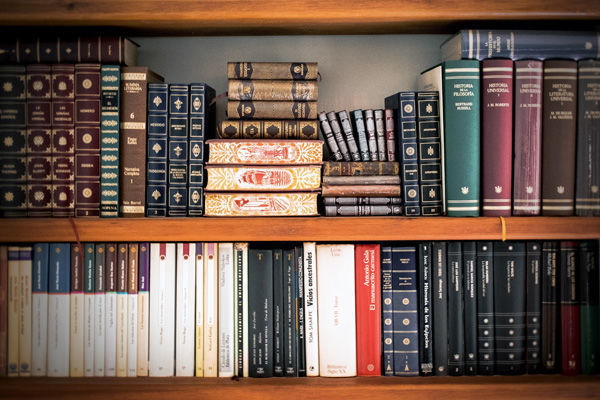【#第一文档网# 导语】以下是®第一文档网的小编为您整理的《新概念英语第一册Lesson9教案》,欢迎阅读!

NC1 - Lesson9 Lesson 9 How are you today? 你今天好吗? 一、教学内容:Diphthongs & possessive pronoun,special question about ‘how’, too和also的区别 二、教学目的: 1. 学生掌握四个双元音的发音 2. 掌握how引导的特殊疑问句及其回答 3. 理解形容词性物主代词 三、教学重点:how引导的特殊疑问句和形物 四、教学难点:形物为什么后面要接名词 五、教学过程: 1. Review the diphthongs 2. Diphthongs [aʊ] house房子--带读---点--ask字母ou发什么音。 发音规则:先发[a],然后滑向[ʊ],双唇逐渐收成圆形,并把舌后部稍稍抬起。口型从开到合 [əʊ] no不---带读---点---ask字母o发什么音 发音规则:先发[ə],双唇扁平,然后滑向[ʊ](双唇逐渐收成圆形)。 [ʊə] poor贫穷的---带读---点---ask字母oor发什么音。 发音规则:先发[ʊ],然后滑向[ə],口型从开到合 [eə] pear梨子----带读------点线面-----ask字母ear发什么音。 发音规则:先发[e],然后滑向[ə]。 A.呈现:Fast reaction, 房子how to say? ( house ) letter ‘ou’ how to pronounce?( [aʊ])<带读,点读,教发音规则,做手势> ---不 how to say?(no)--- letter ‘o’ how to pronounce?( [əʊ])<带读,点读,教发音规则,做手势> ---贫穷的 how to say?(poor)---letter ‘oor’ how to pronounce?([ʊə])<带读,点读><教发音规则,做手势> ---梨子 how to say?(pear)---letter ‘ear’ how to pronounce?([eə])<带读,点读><教发音规则,做手势> ---<带读,快速反应,全部一个一个过关> B.总结:---OK, I have a question, hands up, 这几个音都是?音(元音)--- Why? (气流没有受到嘴巴的阻碍) ---T: OK, 这几个元音由几部分组成?(两部分)--- 两部分分别都是?音(元音)--- “两个元音”也可以说是?元音(双元音)---Wonderful, tell me, what is Diphthongs?(由两个元音组成的元音叫做双元音)--- I will have a check, 读对几个加几分<带读过关,加分> C. Words:拼读---拼写---过关 old[əʊld] 老的 dirty['dɜ:ti]脏的 lazy['leɪzɪ]懒得 today[tə'deɪ]今天 how[haʊ]怎样,如何 fine[faɪn]美好的 --- How many vowels, how many syllables(有多少元音就有多少音节) ---Look at this word, How many vowels? (one) ---How many syllables? (one) --- What is the vowel? ([əʊ]) --- [əʊl] how to read?---[əʊld] how to read? ---带读,过关--- [əʊ]which letter? (o) --- [l] which letters? (l) <点答过关> ---[d] which letters?(d) --- [əʊld] how to spell? (old) --- What’s the meaning?(老的) 3. Grammar 一、 special question about ‘how’, how引导的特殊疑问句: how表“如何”“怎样” How are you? 回答方式: a. I’m fine, thank you. b. fine, thank you. c. I’m very well, thank you. A.呈现:--- T: Who want to have a talk with me? (S:…) --- Excuse me, How are you? (I’m fine, thank you.) <角色对换,S问,T答> --- How are you? (I’m fine, thank you. Fine, thank you. I’m very well, thank you.) --- Well done! Now let’s drive the train. B. 讲解:---what did you ask ?(How are you?)--- what’s the meaning?( 你怎么样啊?)---<板书,背诵,讲解>---由?词引导(how)---是一般疑问句吗?(不是)--- Why?(回答不用Yes/No)---so what’s the NC1 - Lesson9 sentence pattern?(特殊疑问句)---所以how是?词(特殊疑问词)---‘how’ what’s the meaning?(怎么样)--- How to answer? (I’m fine, thank you. Fine, thank you. I’m very well, thank you.)---<板书,带读,背诵>---Practice: Please think about: be动词有几种形式(三种)--- 哪三种(am, is , are)---用法?(单数is, 复数are, I am, you are不分家)---<回到 how are you? 讲解 you 配 are>这里为什么用are, 不用别的be动词(因为这里后面是you)---如果换成he, be动词则用?(is)--- OK, let’s conclude. C. C→E: a.他好吗? b. Tony 好吗? c. Emma好吗? 分别作答: 二、形容词性物主代词possessive pronoun 形容词性物主代词,简称形物 a. 分为: my our your his her its their 我的 我们的 你(们)的 他的 她的 它的 他们的 b. 特点:形物后+名词 c. It’s 和its的区别:it’s是it is 的缩写,表它是,its是形物,表示它的 can call it?(名词)---“big” what’s the meaning?(大的)---用来形容一个物体怎么样的,we can call it?(形容词)---形容词修饰?词(名词)---you should remember it, I will check you. ---E→C: It’s Helen’s bag.(这是Helen的包.)---<板书,背诵>---whose bag is it?( Helen的)---所以Helen是这个包的?(主人) 在BB上作标记>---now I will change this sentence: It’s my bag. what’s the meaning?(这是我的包)---还是我的包不?(是的)---my代替了?(Helen)---so we can call it?(代词)---Helen是物体的?(主人)---my代替了?(物体的主人)--- so we can call it? (物主代词) ---“bag” what’s the part of speech?(名词)---?词修饰名词(形容词)---这个句子中哪个词修饰bag?(my) --- 所以my虽然是物主代词但是具有?词性(形容词性)---所以我们可以叫它为?物主代词(形容词性物主代词)---为了简便点,给它取个绰号(形物)---还有其他的形物吗?hands up, if you are right you can get one point.
B. --- Question: 什么是形物?(具有形容词性质的物主代词)--- 既然具有形容词性质,所以形物后要接?词(名词)---如果去掉这个名词,what’s the meaning? (它是我的) --- 句意还完整吗?(不完整)---所以形物后一定要?(加名词)
C. --- “its” What’s the part of speech? (形物)---what’s the meaning?(它的)---’s and its what’re the differences? 要Ss观察出不同点,T再总结,如果Ss答不出来,则提示> ‘it’s’ what’s the meaning?(它是)---为什么有个逗号?(因为它是缩写)---是?的缩写(it is)---OK,let’s conclude.
三、 The usage of word: too & also a. 共同点: 都表_______都用于_______句
A. 呈现: A: I like apples. B: I like apples, too. C:I also like apples.(A: 我喜欢苹果。B: 我也喜欢苹果。C: 我也喜欢苹果。)
B. 讲解:--- Fast reaction. “也” How to say? (too, also) --- Good. I like apples. what’s the sentence pattern?(肯定句)---在句子的什么位置?(句尾)---“also” what’s meaning?(也)---what’s the sentence pattern?(肯定句)---在句子的什么位置?(句中)---please conclude: and, also的共同点(都表也,都用于肯定句)---不同点(too放在句末,also用在句中)
A. ---Please make a phrase:大的包(big bag)---“bag” what’s the meaning?(包) ---它是一个物体的名字,we
b. 不同点: too 放在句_______ also 放在句_________
本文来源:https://www.dywdw.cn/c3b746de2bf90242a8956bec0975f46526d3a7fc.html

